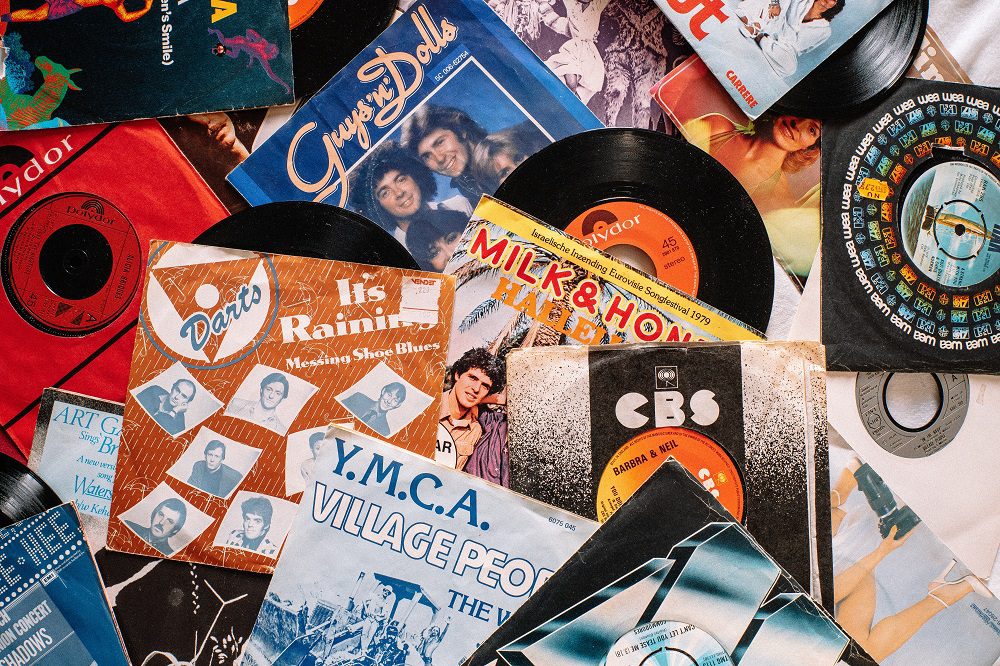An album is a troupe of audio recordings released on compact disc (CD), vinyl, audiotape, or another medium. Albums of recorded sound were made in the early 20th century, as individual 78-rpm records were collected in a book like a photograph album; this format evolved into a single vinyl LP record at 33+1?3 rpm after 1948.
The album was the ascendant form of recorded music expression and consumption from the mid-1960s to the early 21st century, known as the album era. Vinyl LPs are still issued, although album sales in the 21st century are primarily focused on CD and MP3 formats. 8-track tape was the first tape format to be widely used from 1965 until it was phased out with vinyl in 1983 and was gradually replaced by compact cassettes during the 1970s and 1980s; Cassette popularity reached its peak in the late 1980s, declined sharply during the 1990s and largely disappeared during the first decade of the 2000s.?

History of albums vs. modern times:
The recording industry invented albums that contain multitrack songs. The length of an album is always defined by physical and marketing constraints, not my musical taste. Well, almost, there’s the story that the inventor of the CD chose a length of 74min just so his favorite symphony could fit on it ;). Since pop music songs are about 3?6 minutes long, you can check 12?24 on a CD. And it’s always better to fill in all the space than to leave it blank – from a marketing standpoint.?
Today you should not think about albums anymore (except in the exceptional cases mentioned). Now you don’t even have to think of “song” as a fixed length and sound product. Think of a lyric as a service you offer to fans. They don’t have to make the same sound every time they hear it. Change it, play it, just read the words, talk about its political context?. It’s all a song! Don’t let the primitive notion of the recording industry, which was driven by long-standing marketing thinking, decide what a “song” or “album” is to you.
The industry of music has the album limits changing forever. But if you want to get to the point of what should you do? You should contact the following points entirely and then decide for yourself.
Album format:?
A body of work was classified according to technical limitations. Vinyl LPs (long-running) and EPs (extended plays) rose to prominence in the 1950s – before that, everything was primarily 7” singles (one song per side). LPs were typically 33 minutes and 45 minutes, as this means how much music can be carved into the groove of a vinyl album. The CD’s debut in the 80s was a game-changer, allowing up to almost 79 minutes of music. But with the formation of digital platforms and online music-making sites, “we’re moving into a world where you have unlimited space, but limited bandwidth and attention span,” ARIA CEO Dan Rosen tells Triple J.?
Follow the notion ?More is More?:
As we’ve previously discussed, Kanye West has touched on his artistic and spiritual affinity for the seven-song model. Still, it’s also a strategic response to the current album releases designed to improve the streaming system. Released by Migos (Culture II, 24 tracks), Rae Sremmurd (SR3MM, 27 tracks), and Drake (Scenes, 20 tracks; More Life, 22; Scorpion, 25) do not encourage listening in full in one sitting. They actively discourage repeated listening. Those playlists are intended to be selected for consumption, resulting in streams and, therefore, higher chart positions. For example, Post Malone’s Bierbong and all 18 of Bentley’s tracks broke Billboard’s singles chart, resulting in them breaking The Beatles’ record!
Definition of the album by Apple:
An album releases with six tracks or more or longer than 25 minutes. A single is five or fewer songs, as long as it does not exceed 25 minutes in length. (ARIA has no EPs chart.)
Definition of Album by Spotify:
If a product has four to six songs, and its total duration is 30 minutes, it is generally classified as an EP. Therefore, an album typically consists of seven songs and lasts no more than 30 minutes. However, a three-track release may also be designated an EP if the artist or label sets it as a product type. The same if a waiver has more than six tracks and lasts more than 30 minutes.
Conclusion:
As artists continue to test the boundaries of the album format, it can only benefit from a retrospective that we see how current trends of song production shape the artistic body of work.
We can compare this to Radiohead and their Pay What You Want model, with their 2007 album In Rainbows. Likewise, Kanye certainly isn’t the first person to release a seven-track album. Still, he’s a prominent enough artist to get people talking, and it at least makes us think about album length and format in more traditional ways.
Typically an album should be of 7-15 tracks.

As the editor of the blog, She curate insightful content that sparks curiosity and fosters learning. With a passion for storytelling and a keen eye for detail, she strive to bring diverse perspectives and engaging narratives to readers, ensuring every piece informs, inspires, and enriches.









